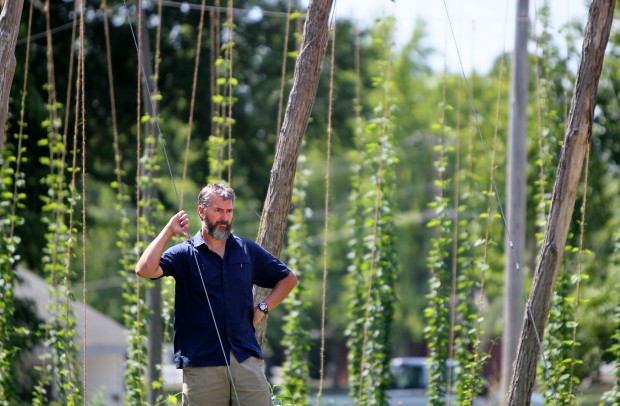
Brewers Association has the straight dope.
First, the prices for hops are pretty much in line with the US crop sector generally (prices to growers, dealer markups may change this). The graph below shows an index of hops prices and the crop sector from 2000 to 2013 (USDA/NASS data, 2000=100). Since that point, hops prices have gone up 92%. General crop sector prices? 86%. Like all farmers, hop growers have to deal with rising energy prices, labor costs and other inputs. Those input costs in turn get passed on to customers.
That’s the bulk of it. Everything gets more expensive to grow as things…well, get more expensive. A big part of the misconception about the rise in hop prices is no doubt related to the fact that most beer enthusiasts don’t really spend much time scrutinizing other aspects of agriculture or crops in general. The article lists lots of other good factors that contribute around the edges. As an armchair economist, this was my favorite:
- A more segmented hop market as the number of hop varieties has increased. Increased segmentation means decreased scale. Decreased scale means increased cost.
The article leaves one point un-analyzed (directly, at least). Is the more-recent upswing in hop pricing (from 2011 to 2013) part of some new longer term pattern for rate increases? You can see it clearly in the graph to the right, but this is really just a couple of data points. We’ll need to wait a few years before we can begin any meaningful analysis to suggest that the rate of of price increase is rising or not relative to crops in general.
In the meantime, try not to sound ignorant by suggesting that our collective lust for Citra-bombs is somehow moving the needle on global hop prices.









Leave a Reply